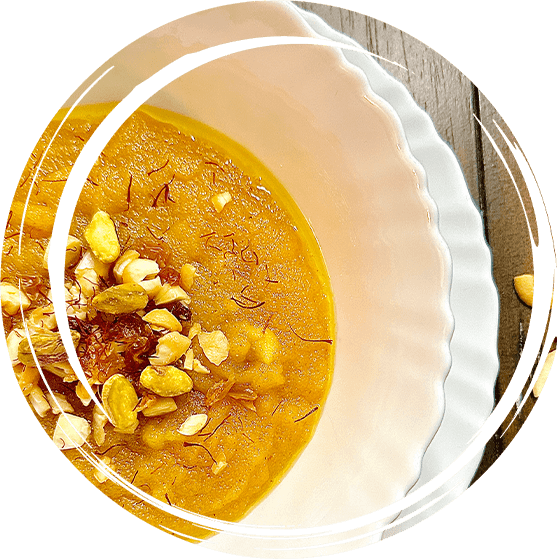
History of Suji Halwa
Suji Halwa: A Sweet Symphony of Indian Desserts
Introduction: Suji Halwa, also known as Semolina Halwa or Sooji ka Halwa, is a beloved Indian dessert that has been captivating taste buds for generations. This delightful sweet treat holds a special place in Indian culture and is often prepared on auspicious occasions, festivals, and family gatherings. Let’s delve into the rich history of Suji Halwa and uncover the origins and cultural significance behind this timeless dessert.
- Ancient Roots: The origins of Suji Halwa can be traced back to ancient India, where wheat-based desserts were prevalent. Semolina, or suji, is coarsely ground wheat, and its usage in culinary preparations dates back to the Vedic period. In ancient Indian literature, references to various wheat-based sweet dishes can be found, suggesting that the idea of making Suji Halwa existed since antiquity.
- Evolution of Suji Halwa: Over the centuries, Suji Halwa underwent changes and adaptations across different regions of India. As the dish spread across the subcontinent, it absorbed local flavors, spices, and ingredients, resulting in a variety of regional variations.
- Influence of Mughal and Persian Cuisine: During the Mughal era in India, culinary influences from Persian and Central Asian cuisines left a lasting impact on Indian sweets, including Suji Halwa. Techniques like sautéing semolina in ghee (clarified butter) and adding dried fruits and nuts were popularized, elevating the dish to new heights of indulgence.
- Religious Significance: Suji Halwa holds significant religious and cultural importance in India. It is often offered as a sacred offering, or “Prasad,” at temples and during religious ceremonies. The simplicity of the ingredients and the divine taste make it a favorite offering to the deities.
- Festive Celebrations: Suji Halwa takes center stage during various Indian festivals. It is a staple dessert during religious celebrations like Navratri, Diwali, and Janmashtami. Additionally, it is served in homes to mark special occasions such as birthdays, weddings, and anniversaries, symbolizing joy and abundance.
- Regional Variations: Across India, different regions have put their unique spin on Suji Halwa. For instance, in North India, it is often garnished with slivered almonds and pistachios, while in South India, it may include coconut or cardamom for added flavor.
- Global Appeal: With the Indian diaspora spreading across the globe, Suji Halwa has found its way into international kitchens, and people of diverse cultures now enjoy this delectable Indian dessert.
Conclusion: Suji Halwa is not just a dessert; it represents the essence of India’s rich culinary heritage, steeped in tradition, history, and cultural significance. This soul-warming sweet dish has stood the test of time and continues to delight generations with its heavenly taste and heartwarming associations. Whether served as a gesture of hospitality or as a part of religious customs, Suji Halwa remains a symbol of love, celebration, and the cherished bond between food and culture in India.


